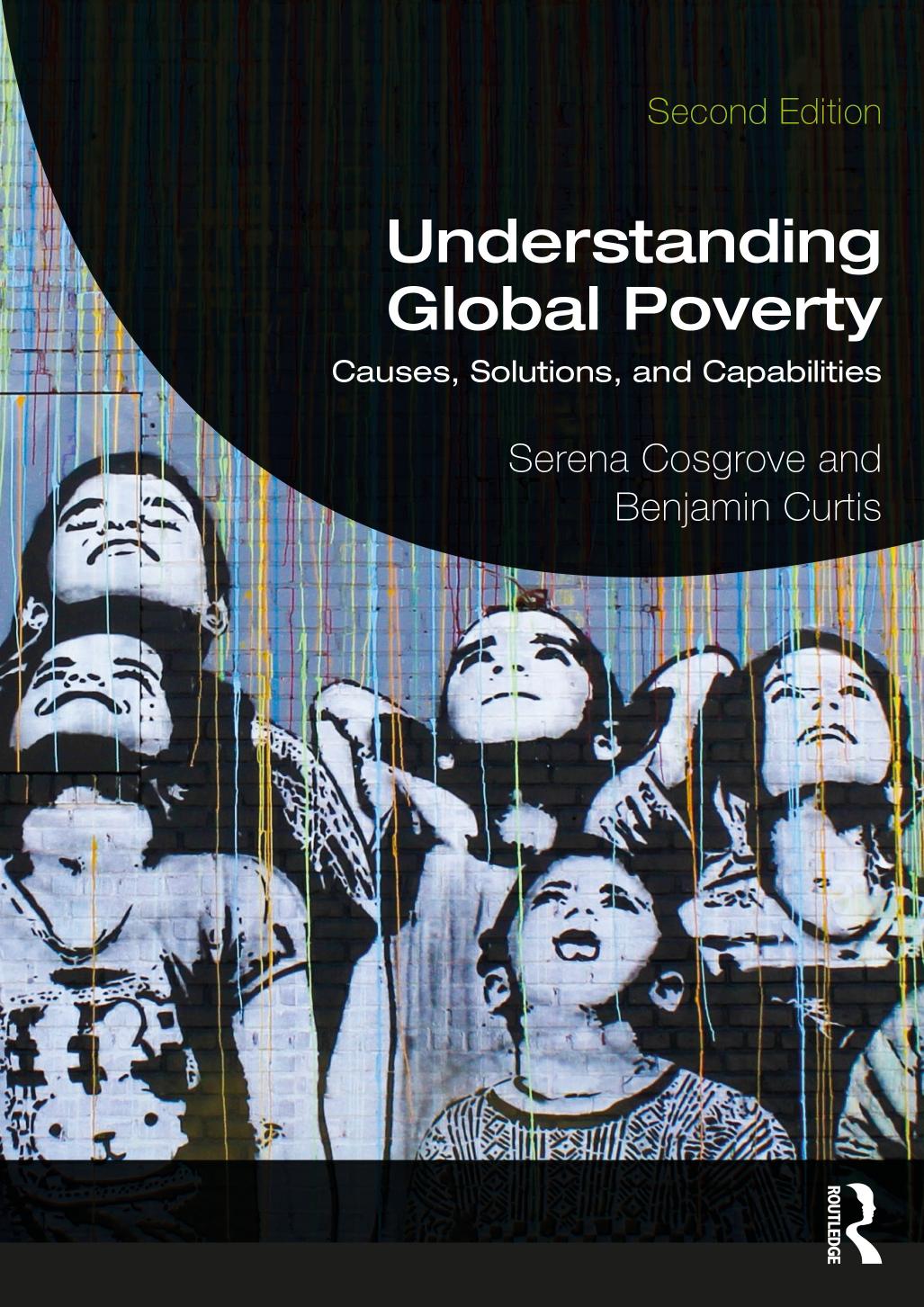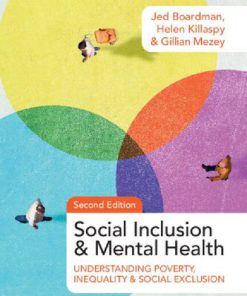Understanding Global Poverty Causes Solutions and Capabilities 2nd Edition by Serena Cosgrove, Benjamin Curtis 036748983X 9780367489830
$50.00 Original price was: $50.00.$25.00Current price is: $25.00.
Understanding Global Poverty Causes Solutions and Capabilities 2nd Edition by Serena Cosgrove, Benjamin Curtis – Ebook PDF Instant Download/Delivery: 036748983X, 9780367489830
Full download Understanding Global Poverty Causes Solutions and Capabilities 2nd Edition after payment

Product details:
ISBN 10: 036748983X
ISBN 13: 9780367489830
Author: Serena Cosgrove; Benjamin Curtis
Understanding Global Poverty introduces students to the study and analysis of poverty, helping them to understand why it is pervasive across human societies, and how it can be reduced through proven policy solutions. The book uses the capabilities and human development approach to foreground the human aspects of poverty, keeping the voices, experiences, and needs of the world’s poor central to the analysis. Starting with definitions and measurement, the book goes on to explore the causes of poverty and how poverty reduction programs and policy have responded in practice. The book also reflects on the ethics of why we should work to reduce poverty and what actions readers themselves can take. This new edition has been revised and updated throughout, featuring: • a new chapter on migration and refugees • additional international examples, including material on Mexico, Covid-19 in global perspective, and South–South development initiatives • information on careers in international development • insights into how various forms of social difference, including race, ethnicity, social class, gender, and sexuality relate to poverty Fully interdisciplinary in approach, the book is also supplemented with case studies, discussion questions, and further reading suggestions in order to support learning. Perfect as an introductory textbook for students across sociology, global development, political science, anthropology, public health, and economics, Understanding Global Poverty will also be a valuable resource to policy makers and development practitioners.
Understanding Global Poverty Causes Solutions and Capabilities 2nd Table of contents:
1 Building a framework for understanding poverty
Learning objectives
Introduction
What is poverty?
Income definitions of poverty
The capabilities approach
Defining the central capabilities
Other important concepts in the capabilities approach
Poverty and capabilities
Wellbeing and happiness
Critiques of the capabilities approach
This book’s method
Conclusion
Discussion questions
Online resources
Further reading
Works cited
2 Development and its debates
Learning objectives
Introduction
What is development?
Human development: strengthening capabilities
Development or poverty reduction or poverty eradication?
Who does development?
The “rise of the south,” and insiders vs. outsiders
Problematizing development
The aid debate
Conclusion
Discussion questions
Online resources
Notes
Further reading
Works cited
3 Multidimensional measurements of poverty and wellbeing
Learning objectives
Vignette 3.1
Introduction
Establishing a poverty line
Monetary measures of poverty
Multidimensional measures
Participatory poverty assessments
How much overlap is there between these measures?
Wellbeing measures
Measurement difficulties
Conclusion
Discussion questions
Online resources
Further reading
Works cited
4 Health and poverty
Learning objectives
Introduction
Maternal mortality
Vignette 4.1 Maternal mortality (eclampsia)
Analysis of disease (eclampsia) and its treatment in one patient
A public health analysis of eclampsia
A capabilities analysis: eclampsia
The role of poverty
Yet another layer of discussion
Summary
Hepatitis C
Vignette 4.2 Hepatitis C
Analysis of disease (Hepatitis C) and its treatment in one patient
Public health analysis
Capabilities analysis
The role of poverty
Human rights analysis (Hepatitis C)
Summary
Malaria
Vignette 4.3 Malaria
Analysis of disease and treatment in one patient: malaria
Public health analysis
Capabilities
The role of poverty
Human rights
Summary
Poverty reduction and health: some major debates
Conclusion
Health, capabilities, and the Covid-19 pandemic: an update to this chapter
The disease
Impact of Covid-19 on capabilities
Discussion questions
Online resources
Further reading
Works cited
5 Geographical and spatial poverty
Learning objectives
Introduction
The disease burden
Temperature, agriculture, and natural resource endowments
Remoteness and integration
The problem of neighbors
Geography and institutions
Spatial poverty and capabilities
Policy solutions
Conclusion
Discussion questions
Online resources
Further reading
Works cited
6 Race, class, gender, and poverty
Learning objectives
Vignette 6.1
Introduction
Understanding race and ethnicity
Understanding social class
Understanding gender and sexuality
Women and girls, poverty and capabilities
Women, girls, and international development efforts
Interlocking identities and capabilities
Vignette 6.2
Conclusion
Discussion questions
Online resources
Notes
Further reading
Works cited
7 State institutions, governance, and poverty
Learning objectives
Vignette 7.1
Introduction
Definitions and measures
How institutions impact poverty and development
Institutions and capabilities
The importance of democracy in institutions and governance
What shapes institutions and governance?
Critiques of the institutions/governance perspective
What works to get better institutions and governance
Conclusion
Discussion questions
Online resources
Further reading
Works cited
8 Conflict and poverty
Learning objectives
Vignette 8.1
Introduction
How poverty causes conflict
How conflict causes poverty at the macro level
How conflict causes poverty at the micro level
Protecting people in conflict
Reconstruction, recovery, and reconciliation
Conclusion
Discussion questions
Online resources
Notes
Further reading
Works cited
9 Migration and poverty reduction: Balancing human security and national security
Learning objectives
Vignette: Human security and national security along the United States–Mexico Border
Introduction
The vocabulary of migration
Who is a migrant?
Four key categories
Useful distinctions in the vocabulary of migration
Why migrate?
The aspirations–capabilities framework
Other key paradigms and theories of migration
The emergent realities of migration
What are the key migration trends and patterns?
Economic patterns and trends
Geographic patterns and trends
Demographic patterns and trends
Political patterns and trends
What are the key regimes and agreements that govern migration?
Human rights accords
The Sustainable Development Goals and the Global Compacts
Labor migration accords
The intersections of migration and human development
How might we contextualize migration and capabilities?
Garifuna mixed migration and capabilities
Labor migration and the unfreedom of migrant workers
What are the key policies at the intersection of migration and capabilities?
Policy area: Improving human mobility and capabilities through enhanced labor migration management
Policy area: Improving human mobility and capabilities through enhancements to the international refugee regime
Conclusion
Discussion questions
Online resources
Notes
Further reading
Works cited
10 Education as poverty reduction
Learning objectives
Introduction
Problems with access
Problems with outcomes
Education as a development strategy
What works to improve education?
Conclusion
Discussion questions
Online resources
Further reading
Works cited
11 The environment and poverty reduction
Learning objectives
Vignette 11.1
Introduction
Understanding key concepts
Poverty–environment relationships
Capabilities and environmental conditions
Case studies
Case study 11.1 The community water systems of Costa Rica
Case study 11.2 The urban settlement of La Carpio
Case study 11.3 Sustainable development in Monteverde
Conclusion
Discussion questions
Online resources
Further reading
Works cited
12 Financial services for the poor
Learning objectives
Introduction
Microfinance: examples and definitions
Microfinance and technology
Microfinance and capabilities
Microfinance debates
Credit-only or credit-plus?
Ideological disputes around microfinance
Debates about empowerment
Microfinance’s impacts at the micro and macro levels
Conclusion
Discussion questions
Online resources
Further reading
Works cited
Conclusion: Ethics and action – What should you do about global poverty?Benjamin Curtis and Serena Cosgrove
Learning objectives
People also search for Understanding Global Poverty Causes Solutions and Capabilities 2nd:
solutions to global poverty
voluntary poverty examples
understanding poverty levels
poverty global problem
Tags:
Serena Cosgrove,Benjamin Curtis,Understanding,Global
You may also like…
Uncategorized
Politics & Philosophy - International Relations
Uncategorized
Mathematics - Analysis
Uncategorized
Science (General) - Science of Science
Understanding Global Media Second Edition by Terry Flew 9781350306448 1350306444
Biography & Autobiography - True Crime











